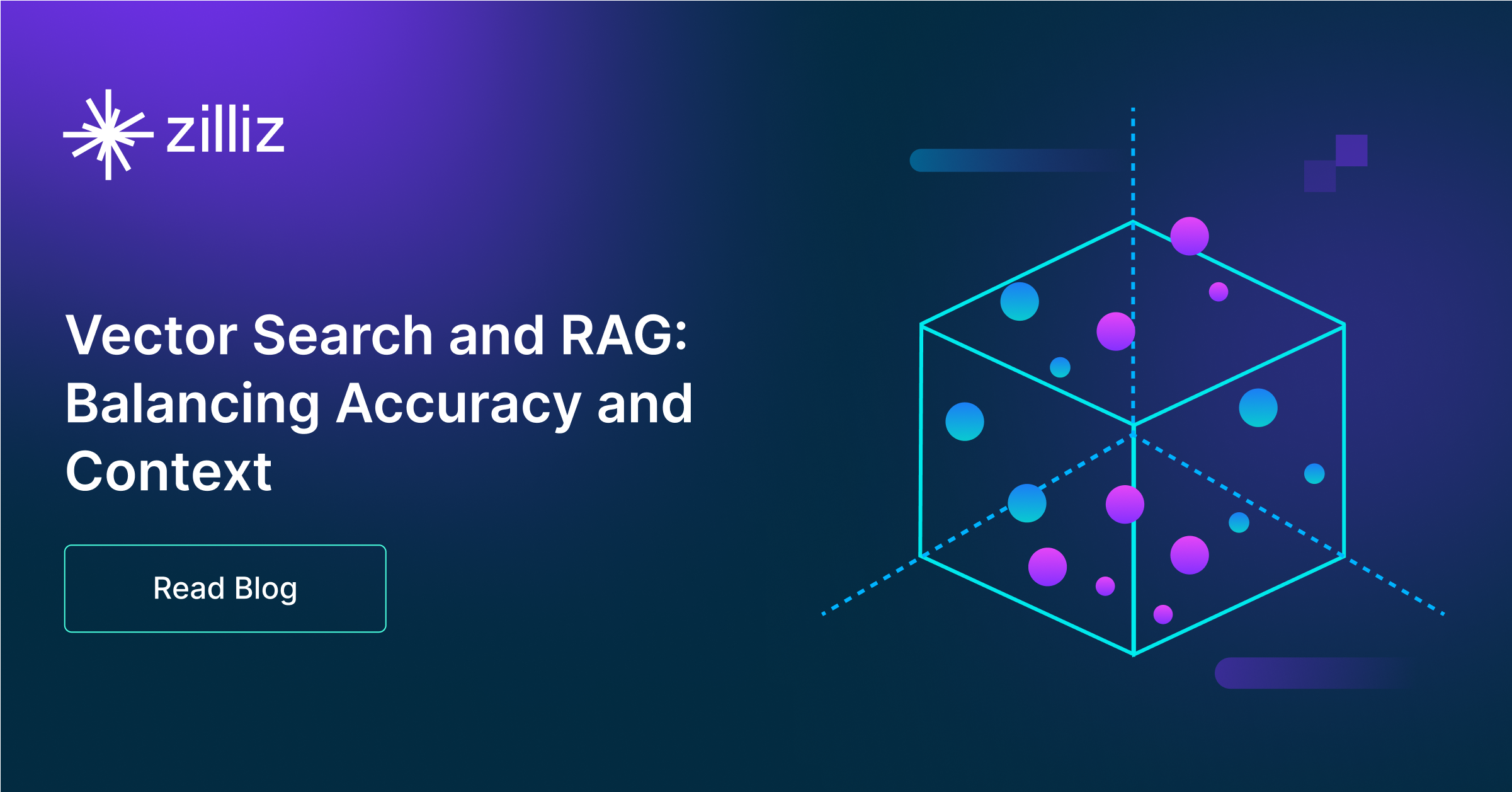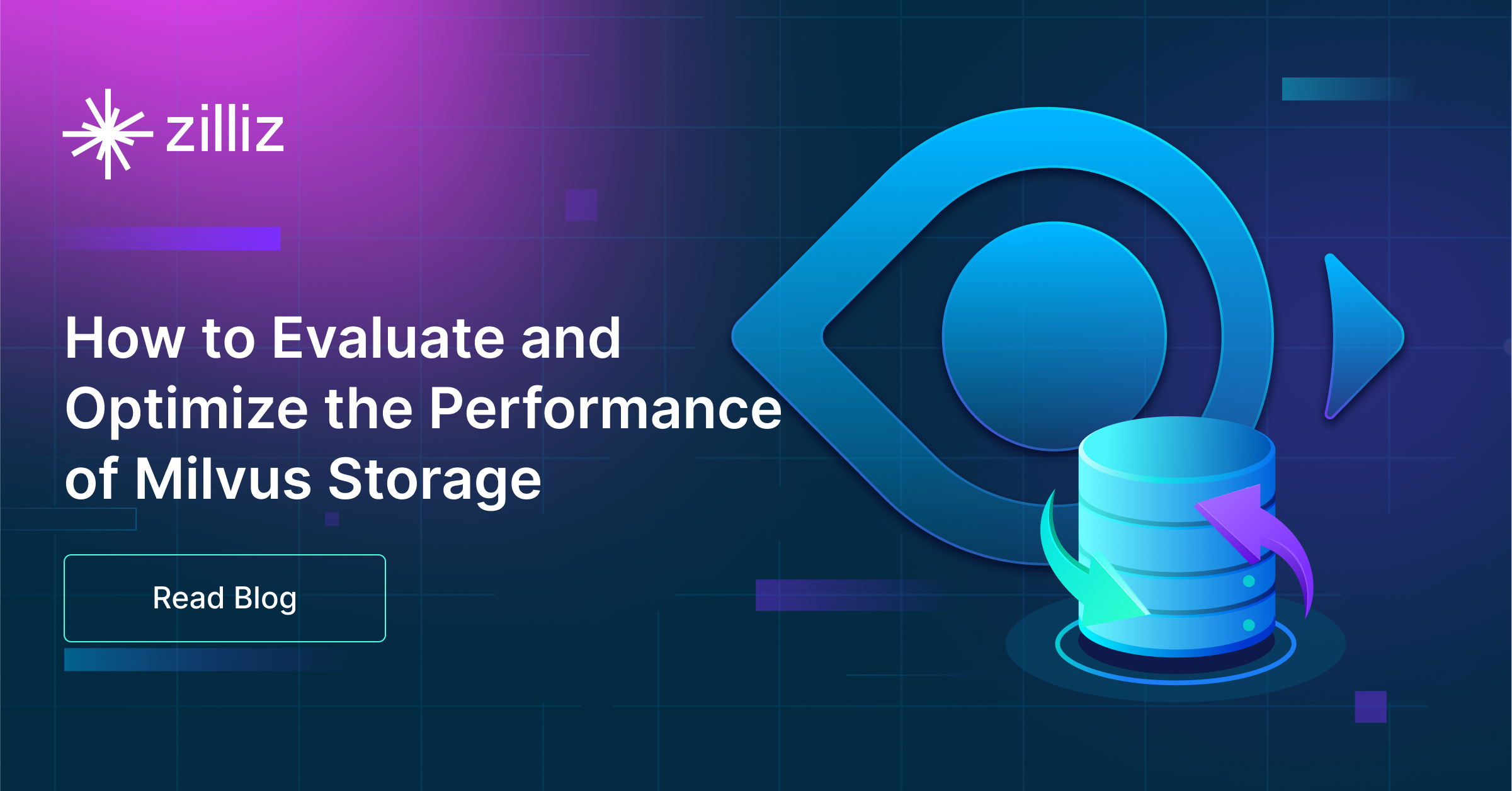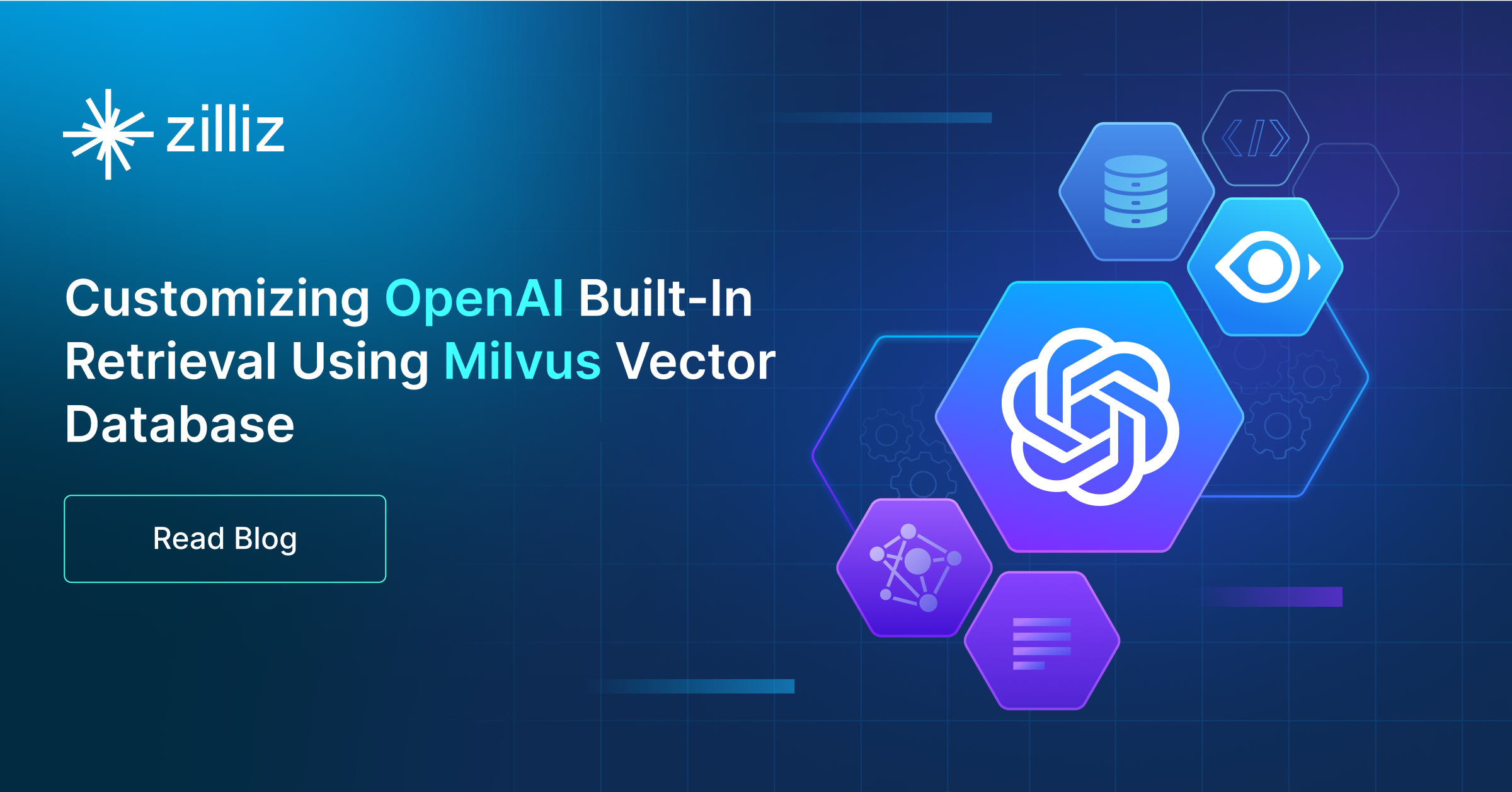Build RAG Chatbot with Llamaindex, HNSWlib, Anthropic Claude 3.7 Sonnet, and Ollama snowflake-arctic-embed
Introduction to RAG
Retrieval-Augmented Generation (RAG) is a game-changer for GenAI applications, especially in conversational AI. It combines the power of pre-trained large language models (LLMs) like OpenAI’s GPT with external knowledge sources stored in vector databases such as Milvus and Zilliz Cloud, allowing for more accurate, contextually relevant, and up-to-date response generation. A RAG pipeline usually consists of four basic components: a vector database, an embedding model, an LLM, and a framework.
Key Components We'll Use for This RAG Chatbot
This tutorial shows you how to build a simple RAG chatbot in Python using the following components:
- Llamaindex: a data framework that connects large language models (LLMs) with various data sources, enabling efficient retrieval-augmented generation (RAG). It helps structure, index, and query private or external data, optimizing LLM applications for search, chatbots, and analytics.
- HNSWlib: a high-performance C++ and Python library for approximate nearest neighbor (ANN) search using the Hierarchical Navigable Small World (HNSW) algorithm. It provides fast, scalable, and efficient similarity search in high-dimensional spaces, making it ideal for vector databases and AI applications.
- Anthropic Claude 3.7 Sonnet: Anthropic Claude 3.7 Sonnet: Claude 3.7 Sonnet is an advanced AI language model developed by Anthropic, designed to offer enhanced reasoning, alignment, and safety. It excels in tasks requiring sophisticated conversational abilities, providing users with natural, context-aware responses while maintaining ethical and safe outputs. Ideal for applications in customer service, content generation, and dialogue systems where safety and clarity are paramount.
- Ollama Snowflake-Arctic-Embed: A high-performance embedding model optimized for semantic understanding and retrieval tasks. It excels in generating dense vector representations for text, offering robust accuracy and scalability. Ideal for enterprise applications like semantic search, recommendation systems, and data clustering, particularly in environments leveraging Snowflake’s data ecosystem for seamless integration and large-scale analytics.
By the end of this tutorial, you’ll have a functional chatbot capable of answering questions based on a custom knowledge base.
Note: Since we may use proprietary models in our tutorials, make sure you have the required API key beforehand.
Step 1: Install and Set Up Llamaindex
pip install llama-index
Step 2: Install and Set Up Anthropic Claude 3.7 Sonnet
%pip install llama-index-llms-anthropic
from llama_index.llms.anthropic import Anthropic
# To customize your API key, do this
# otherwise it will lookup ANTHROPIC_API_KEY from your env variable
# llm = Anthropic(api_key="")
llm = Anthropic(model="claude-3-7-sonnet-latest")
Step 3: Install and Set Up Ollama snowflake-arctic-embed
%pip install llama-index-embeddings-ollama
from llama_index.embeddings.ollama import OllamaEmbedding
embed_model = OllamaEmbedding(
model_name="snowflake-arctic-embed",
)
Step 4: Install and Set Up HNSWlib
%pip install llama-index-vector-stores-hnswlib
from llama_index.vector_stores.hnswlib import HnswlibVectorStore
from llama_index.core import (
VectorStoreIndex,
StorageContext,
SimpleDirectoryReader,
)
vector_store = HnswlibVectorStore.from_params(
space="ip",
dimension=embed_model._model.get_sentence_embedding_dimension(),
max_elements=1000,
)
Step 5: Build a RAG Chatbot
Now that you’ve set up all components, let’s start to build a simple chatbot. We’ll use the Milvus introduction doc as a private knowledge base. You can replace it with your own dataset to customize your RAG chatbot.
import requests
from llama_index.core import SimpleDirectoryReader
# load documents
url = 'https://raw.githubusercontent.com/milvus-io/milvus-docs/refs/heads/v2.5.x/site/en/about/overview.md'
example_file = 'example_file.md' # You can replace it with your own file paths.
response = requests.get(url)
with open(example_file, 'wb') as f:
f.write(response.content)
documents = SimpleDirectoryReader(
input_files=[example_file]
).load_data()
print("Document ID:", documents[0].doc_id)
storage_context = StorageContext.from_defaults(vector_store=vector_store)
index = VectorStoreIndex.from_documents(
documents, storage_context=storage_context, embed_model=embed_model
)
query_engine = index.as_query_engine(llm=llm)
res = query_engine.query("What is Milvus?") # You can replace it with your own question.
print(res)
Example output
Milvus is a high-performance, highly scalable vector database designed to operate efficiently across various environments, from personal laptops to large-scale distributed systems. It is available as both open-source software and a cloud service. Milvus excels in managing unstructured data by converting it into numerical vectors through embeddings, which facilitates fast and scalable searches and analytics. The database supports a wide range of data types and offers robust data modeling capabilities, allowing users to organize their data effectively. Additionally, Milvus provides multiple deployment options, including a lightweight version for quick prototyping and a distributed version for handling massive data scales.
Optimization Tips
As you build your RAG system, optimization is key to ensuring peak performance and efficiency. While setting up the components is an essential first step, fine-tuning each one will help you create a solution that works even better and scales seamlessly. In this section, we’ll share some practical tips for optimizing all these components, giving you the edge to build smarter, faster, and more responsive RAG applications.
LlamaIndex optimization tips
To optimize LlamaIndex for a Retrieval-Augmented Generation (RAG) setup, structure your data efficiently using hierarchical indices like tree-based or keyword-table indices for faster retrieval. Use embeddings that align with your use case to improve search relevance. Fine-tune chunk sizes to balance context length and retrieval precision. Enable caching for frequently accessed queries to enhance performance. Optimize metadata filtering to reduce unnecessary search space and improve speed. If using vector databases, ensure indexing strategies align with your query patterns. Implement async processing to handle large-scale document ingestion efficiently. Regularly monitor query performance and adjust indexing parameters as needed for optimal results.
HNSWlib optimization tips
To optimize HNSWlib for a Retrieval-Augmented Generation (RAG) setup, fine-tune the M parameter (number of connections per node) to balance accuracy and memory usage—higher values improve recall but increase indexing time. Adjust ef_construction (search depth during indexing) to enhance retrieval quality. During queries, set ef_search dynamically based on latency vs. accuracy trade-offs. Use multi-threading for faster indexing and querying. Ensure vectors are properly normalized for consistent similarity comparisons. If working with large datasets, periodically rebuild the index to maintain efficiency. Store the index on disk and load it efficiently for persistence in production environments. Monitor query performance and tweak parameters to achieve optimal speed-recall balance.
Anthropic Claude 3.7 Sonnet Optimization Tips
To optimize the use of Anthropic Claude 3.7 Sonnet in a Retrieval-Augmented Generation (RAG) setup, focus on ensuring high-quality, relevant retrievals from your document store. Preprocess and index your knowledge base effectively by removing redundancy and structuring content for easy retrieval. Additionally, fine-tune the model on domain-specific data to improve response relevance. Consider batching requests for efficiency and adjusting the temperature and top-k parameters to balance creativity and accuracy. Monitor performance closely and adjust query embeddings to fine-tune the retrieval pipeline, ensuring low-latency and high-accuracy answers.
Ollama Snowflake-Arctic-Embed optimization tips
To optimize Ollama Snowflake-Arctic-Embed in a RAG setup, ensure input text is cleanly chunked (e.g., 256-512 tokens) to align with its context window. Use batch processing for embeddings to reduce latency, and leverage hardware acceleration (e.g., CUDA for GPUs). Fine-tune with domain-specific data to improve retrieval relevance. Quantize the model for faster inference with minimal accuracy loss. Cache frequently accessed embeddings, and experiment with dimensionality reduction techniques like PCA if storage or speed constraints exist. Regularly validate embedding quality using similarity benchmarks.
By implementing these tips across your components, you'll be able to enhance the performance and functionality of your RAG system, ensuring it’s optimized for both speed and accuracy. Keep testing, iterating, and refining your setup to stay ahead in the ever-evolving world of AI development.
RAG Cost Calculator: A Free Tool to Calculate Your Cost in Seconds
Estimating the cost of a Retrieval-Augmented Generation (RAG) pipeline involves analyzing expenses across vector storage, compute resources, and API usage. Key cost drivers include vector database queries, embedding generation, and LLM inference.
RAG Cost Calculator is a free tool that quickly estimates the cost of building a RAG pipeline, including chunking, embedding, vector storage/search, and LLM generation. It also helps you identify cost-saving opportunities and achieve up to 10x cost reduction on vector databases with the serverless option.
 Calculate your RAG cost
Calculate your RAG cost
What Have You Learned?
Wow, what an adventure you've just been on! After diving into this tutorial, you’ve not only grasped the foundational concepts behind building a Retrieval-Augmented Generation (RAG) system but also get to see how each component plays a pivotal role in the grand scheme of things. By integrating LlamaIndex as your framework, you’ve set up an organized and efficient structure to manage your data. Utilizing HNSWlib as your vector database has empowered you to store and retrieve embeddings with lightning speed, enhancing the responsiveness of your system. And let’s not forget the magic of the Anthropic Claude 3.7 Sonnet model, which can generate human-like text that suits your applications perfectly. With the Ollama snowflake-arctic-embed model providing high-quality embeddings, your system is now equipped to handle a diverse array of tasks, from answering questions to creating dynamic content.
But that’s not all! You’ve also picked up valuable optimization techniques that will enhance the performance of your RAG system, making it smoother and more efficient. With the free RAG cost calculator, you can now estimate your project’s costs, which is a game-changer for planning and budgeting. Imagine all the innovative applications you can start crafting! So why wait? Take this newfound knowledge and dive right in! Experiment, build, and iterate on your RAG applications boldly. The possibilities are endless, and each line of code you write brings you closer to achieving truly remarkable outcomes. Happy building!
Further Resources
🌟 In addition to this RAG tutorial, unleash your full potential with these incredible resources to level up your RAG skills.
- How to Build a Multimodal RAG | Documentation
- How to Enhance the Performance of Your RAG Pipeline
- Graph RAG with Milvus | Documentation
- How to Evaluate RAG Applications - Zilliz Learn
- Generative AI Resource Hub | Zilliz
We'd Love to Hear What You Think!
We’d love to hear your thoughts! 🌟 Leave your questions or comments below or join our vibrant Milvus Discord community to share your experiences, ask questions, or connect with thousands of AI enthusiasts. Your journey matters to us!
If you like this tutorial, show your support by giving our Milvus GitHub repo a star ⭐—it means the world to us and inspires us to keep creating! 💖
- Introduction to RAG
- Key Components We'll Use for This RAG Chatbot
- Step 1: Install and Set Up Llamaindex
- Step 2: Install and Set Up Anthropic Claude 3.7 Sonnet
- Step 3: Install and Set Up Ollama snowflake-arctic-embed
- Step 4: Install and Set Up HNSWlib
- Step 5: Build a RAG Chatbot
- Optimization Tips
- RAG Cost Calculator: A Free Tool to Calculate Your Cost in Seconds
- What Have You Learned?
- Further Resources
- We'd Love to Hear What You Think!
Content
Vector Database at Scale
Zilliz Cloud is a fully-managed vector database built for scale, perfect for your RAG apps.
Try Zilliz Cloud for Free


